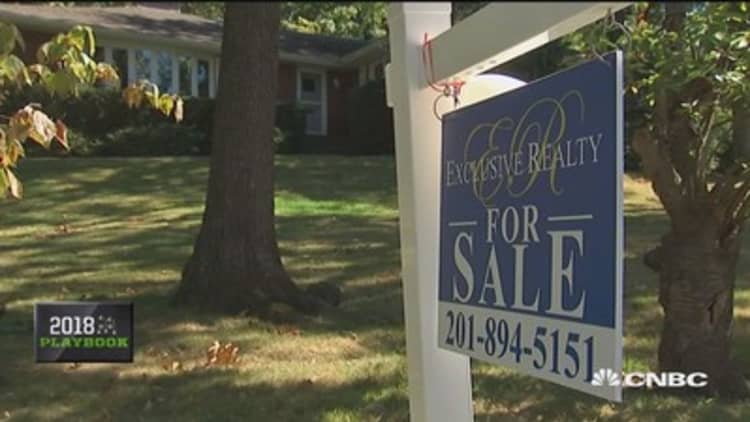
After a stronger-than-expected surge through much of the fall, homebuyers took a breather in November.
Signed contracts to buy existing homes were flat for the month, up just 0.2 percent from October, according to the National Association of Realtors' seasonally adjusted monthly index of pending home sales.
The index was 0.8 percent higher than November 2016, the first annual gain since last June. Pending sales are an indicator of future closed sales in the next two months.
Sales of existing and newly built homes had slowed during the summer but then turned dramatically higher in October and November, surprising the experts who continue to point to the low supply of homes for sale as a drag on the market. Supply weakened further in November, which is likely part of the pullback.
"The housing market is closing the year on a stronger note than earlier this summer, backed by solid job creation and an economy that has kicked into a higher gear," said Lawrence Yun, chief economist for the NAR.
"However, new buyers coming into the market are finding out quickly that their options are limited and competition is robust. Realtors say many would-be buyers from earlier this year, stifled by tight supply and higher prices, are still trying to buy a home," Yun said.
Home prices continue to show strong gains, accelerating from earlier in the year due to high demand. The supply of homes for sale fell to just 3.4 months' worth in November, the lowest since the NAR began tracking supply in 1999. That is keeping prices high.
Prices were up 6.2 percent nationally in October, according to the S&P CoreLogic Case Shiller Home Price Index. That was an acceleration from September. Higher prices are hurting demand. A demand index from Redfin, a real estate brokerage, fell in November, after rising through much of the early fall. The index measures requests for home tours, offers and signed contracts.
"Three years of low inventory is taking its toll on buyer demand in terms of tour and offer activity," said Redfin chief economist Nela Richardson. "People still want to buy homes, especially before mortgage interest rates increase and prices rise even more. But there just aren't enough homes for sale, especially at lower- to mid-level prices."
Predictions for 2018 are for higher sales, but not much higher. Unless supply grows, sales likely won't see big gains. Homebuilders are increasing production but in a slow, measured way. Potential sellers are staying on the sidelines, worried they either can't find or afford another home.
"Sales do have room for growth in most areas, but nationally, overall activity could be slightly negative. Markets with high home prices and property taxes will likely feel some impact from the reduced tax benefits of owning a home," said Yun.
Pending home sales in the Northeast jumped 4.1 percent for the month and were 1.1 percent above a year ago.
In the Midwest, sales rose 0.4 percent monthly and 0.8 percent annually.
Pending home sales in the South decreased 0.4 percent monthly but were 2.5 percent higher than last November.
Sales in the West declined 1.8 percent for the month and were 2.3 percent below a year ago.


